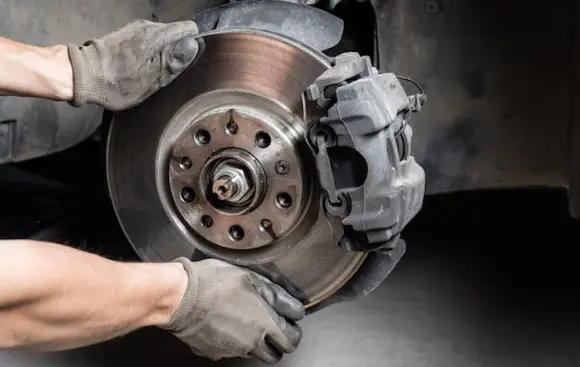Whether you’ve purchased a new Volkswagen or are a seasoned Volkswagen owner, there are a few things that you’ll need to know about your vehicle’s brakes. The first thing you need to know is that Volkswagen brakes are not the same as other automobile brakes. They are designed to work with a specific type of brake pad. If you’re using a different type of brake pad, it will wear out more quickly than the original pads that came on your vehicle. In addition, the rotors on your vehicle may have an oily residue on the face. This can make your brakes screech or squeal, and can even cause the brake warning light to come on.
Oily residue on the brake rotor face
During brake pad replacement, it’s important to check the VW brake rotors for sharp edges and debris. This is because brake pads and rotors are meant to wear at the same time. If a rotor is worn, it may need to be replaced to bring it back to factory specifications.
There are two main types of brake rotors: cast iron and reinforced carbon. Both have the same purpose: to provide a smooth surface for the brake pad to press against. The only difference is the type of material used. The former is more common and can be machined to a smooth finish. The latter is softer and can be scratched. The rotor should be cleaned before installation, and a protective coating of oil from the manufacturer is applied.
High-pitched screech or squeal
Getting a high-pitched screech or squeal when using Volkswagen brakes isn’t a good sign. It could indicate a problem with your braking system, which can be expensive to repair.
This can be caused by a number of different problems. If you’re not sure what’s causing the squeal, your best bet is to take the car to a service department. Typically, this would involve a brake inspection and possibly pad replacement.
Another common cause is a loose fan belt. This can also cause the engine to squeal while running. If this is the case, you should replace the fan belt and timing belt at the same time. This is a more cost effective method of fixing the issue.
Torn brake caliper piston boot
Having a torn brake caliper piston boot can lead to moisture leaking into the caliper. This can cause corrosion. The caliper may also stick. When the brake pedal is pressed, the caliper will try to compress the pads into the rotor. This can cause uneven pad wear.
There are a few ways to repair a torn caliper piston boot. Some people will recommend using compressed air to remove the piston. Other people will suggest using a C-clamp. It is important to choose a repair method that will work on your particular car. If the boot is split, you might have to replace the entire caliper assembly.
A torn caliper piston boot can also be a result of rust. If you drive on a salty or rainy road, the caliper can become corroded. You can use a Dremel wire wheel to smooth out the rusted edges of the caliper bore. If you do not have a Dremel, you can simply sandpaper down the edges of the caliper to clean them.
Aftermarket brake pads wear out rotors faster than OEM pads
Whether you buy OEM or aftermarket brake pads, it is important to know when to replace them. The lifespan of your pads is dependent on many factors including the braking system, driving habits and where you live. You may need to replace your pads sooner if you ride the brakes a lot, drive a heavy-duty vehicle or take frequent trips through hilly areas.
For example, if you live in an area with more traffic and stop signs, you’ll have to use your brakes more often. This results in more heat being produced and a smaller amount of pressure being applied to the pads. This can result in rotors wearing out faster.
Aftermarket pads are less expensive than OEM pads, but they aren’t always guaranteed to last as long. Cheaper aftermarket pads can contain asbestos, which is toxic and is very hazardous. Also, aftermarket pads are rarely made to OEM specs.
Low brake fluid can cause a brake warning light
Having a brake warning light in your dashboard may indicate a problem with your braking system. The warning light can be an indication of a problem with the brake pad, a leak in the brake fluid, or a failure in the hydraulic system.
The brake system in your car has sensors that monitor the level of fluid. If the level of the fluid in your brakes becomes too low, the brake warning light will activate.
The best way to check your brakes is to use your owner’s manual. The manual will give you instructions for checking the level of your brake fluid, as well as the type of fluid to use.
A low brake fluid level can be a sign of a worn brake pad or a leak in the hydraulic system. If the fluid is low, the pedal may feel different and the car will not respond properly.
